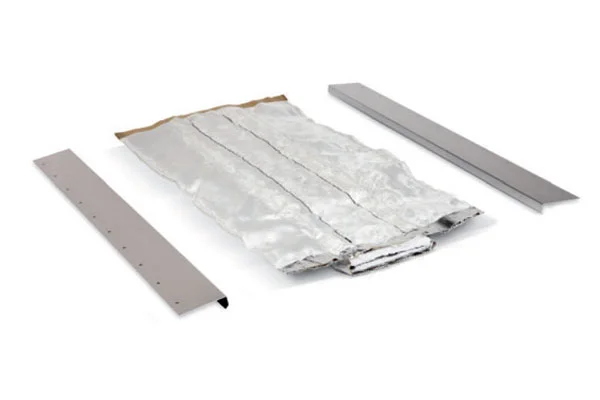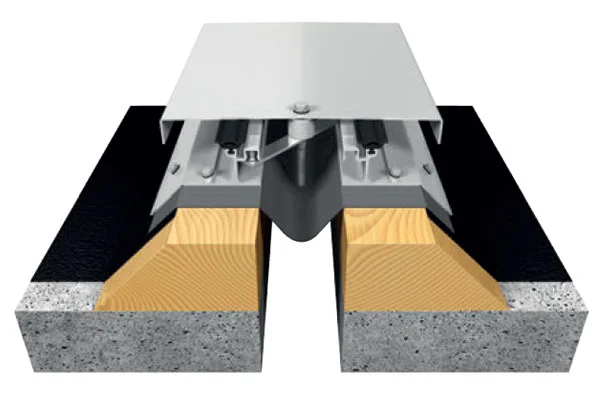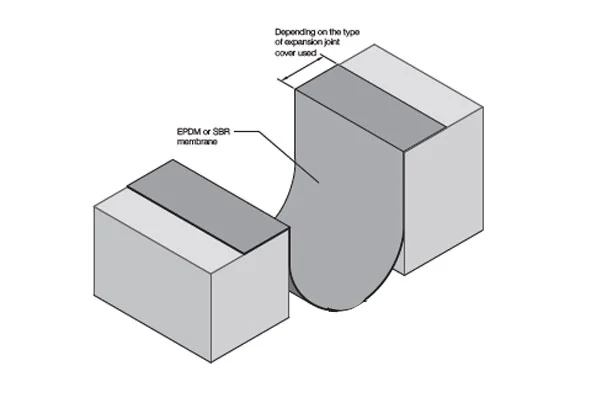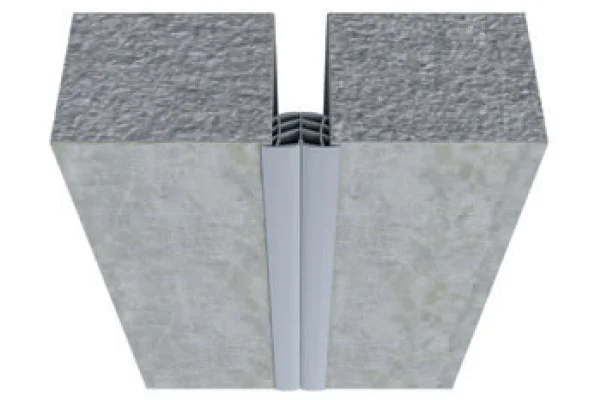Results of geodetic measurements
The results of the geodetic measurements are presented in the deformation graphs of the floor on the ground floor and the first floor, concerning the individual measurement points. Minor floor irregularities recorded in measurement lines 2, 5, 7, and 8 (Fig. 6b, e, g, h). The measurements taken of 2019 showed the level differences between points in these lines range from 12 to 20 mm, and the maximum floor slope is between 0.38% and 0.75% (Table 1). In the remaining measurement lines, the level differences range from 12 to 56 mm, with slopes ranging from 0.5 to 0.75%. During the last measurements in 11.2024, the recorded deformations increased to 119 mm and slopes up to 1.75%.
Figures 6, 7 and 8 present the evolution of floor-level profiles measured along survey lines, at day 0 (solid black), day 527 (dashed gray) and day 1 900 (light gray). Measurements taken along lines 1, 2, and 3 indicate the presence of an area where low-load-bearing fill was left in place. All measurements indicate an increase in heave in the zones with ground replacement, accompanied by a simultaneous increase in settlement within the low-load-bearing fill area. The rate of deformation does not show any noticeable slowdown. During the measurement period for zone of minor floor irregularities, the total displacement exceeded 20 mm (Fig. 6a), with settlements exceeding 10 mm (Fig. 6b). Over a relatively short distance (Fig. 6c), significant differences in soil swelling resulted in considerable bending and damage to the floor layers.
Results of geodetic measurements: (a) line 1, (b) line 2, (c) line 3, floor under the ceiling of the first floor.
Displacement differences were also observed on the floor surface above the ground floor (Fig. 7). These differences result from movements of the foundation and consequently, induce deformations in the supporting structure of the upper floor (placed on thinner layer of slag). The upper floor construction elements primarily undergo settlement in the area low-load-bearing fill and exhibit lower heave dynamics compared to the ground floor slab. The floor deformation on the upper level also show deflections of the structure (in the range from 0 m to 6 m along measurement line 4 F in compare to line 3).
Results of geodetic measurements at the first floor.
Figure 8 presents the profiles measured along survey lines 5–8. In all profiles, the highest positive deflections corresponding to regions underlain by the slag layer exhibit progressive uplift over time. The initial 40 mm peak on line 6 rises to 80 mm by day 1 900, while analogous but smaller positive trends occur at line 5. Smaller relative uplift was recorded for lines 7 and 8 at the opposite site of the measurement area. The measurement at the middle sections of lines 5 and 6 shows relatively lowest floor uplift. Similar sections for lines 7 and 8 show settlement from near 0 mm to around 15 mm by day 1 900. The highest settlement values were recorded at the intersection of lines 2 and 8. Line 6 shows the displacements in one of the rooms outside the measurement grid. The points in that room (axis Y-5) recorded the highest displacement values of all locations. For lines 5 and 6, the most significant amplitude between peak and trough was recorded, whereas lines 7 and 8 show a more moderate uplift but a pronounced net settlement in low-load-bearing fill zones. These contrasting behaviours, slower sustained heave or settlement over the same sections versus accelerated ground movement, underscore the differential deformation characteristics and the importance of accounting for their evolving properties in long-term structural assessments.
Results of geodetic measurements: (a) line 5, (b) line 6, (c) line 7, (d) line 8.
Upon analysing the geodetic measurement results, a particular pattern was observed. In areas where the soil was fully replaced and slag layers were layed, the highest floor deformation (uplift) was observed. In areas where only partial soil replacement occurred, leaving some of the low-load-bearing fill layers, the lowest floor subsidence was noted. In the areas of floor uplift, characteristic behaviour was observed, similar to that caused by the swelling of the underlying layers beneath the floor and structure. These included blocking the doors in the rooms, buckling partition walls, and cracking on the floor that opened upward. Slag was installed under the floor in this area. The cause of the floor irregularities and the damage to the walls and ceilings is related to their foundation. On one side, it rests on non-structural fill materials that were not replaced, while on the other side, it is supported by layers of slag. The slag undergoes expansion due to decomposition processes (its volume increases), and the swelling pressure is greater than the load due to the individual structural elements of the building.
Figure 9 shows a map generated through bicubic interpolation from measurement data collected along the survey axis. This method was employed to interpolate values across intermediate areas where direct measurements were not available, ensuring a continuous spatial representation of surface displacements. The regions exhibiting the greatest settlements, indicated by negative values and blue shading, correspond with zones identified as low-load-bearing fill. The map effectively captures the complex deformation patterns occurring across the slab surface. These deformations are attributed to the presence of expansive slag-based fills, as well as the heterogeneity of the low-load-bearing fill.
Displacement map after 1913 days.
Figure 10 shows floor-level variations at key measurement points. The heaving progresses at a similar rate on both the eastern and western sides of the structure in areas where complete soil replacement was performed (Fig. 10a,b). In areas where the soil was not entirely replaced. Remnants of the original low-load-bearing fill remain also steady floor settlement has been observed (Fig. 10c). In the central part of the hall, where complete soil replacement was carried out, floor levels remain stable (Fig. 10d). Certain measured displacements result from the accuracy of measurements and in part, from the bending of the floor in adjacent areas (Fig. 7d). A steady, almost lineral trend is noticeable at the points subject to swelling (Fig. 7a,b). The swelling process is not impeded.
Changes in floor displacement in the building: (a) from the eastern side, in the area of complete soil replacement, (b) from the western side, in the area of complete soil replacement, (c) in the area of partial soil replacement, (d) in the southern part, in the area of complete soil replacement.
The vertical displacements of the columns are minor, ranging from 4 mm (upward movement) to -7 mm (settlement). An upward movement of approximately 3–4 mm, which falls within the measurement accuracy range, was observed only for columns III, IV, and V. For the remaining columns, settlement ranging from 1 mm to 7 mm was recorded. Thus, geodetic measurements of the columns (Fig. 11) did not reveal any significant structural movements comparable to those observed in the floor. The volumetric changes predominantly occur within the thicker slag layers.
Changes in vertical displacements of selected columns in the building.
Results of geotechnical tests
The conducted tests confirmed the soil layer structure identified in previous (2011) geotechnical investigations (Fig. 2) and revealed that at the test point E (eastern part of the building), groundwater was present at a depth of 4.5 m below the ground level. Laboratory tests revealed that the slag in the upper layer (0.8–1.4 m below ground level) had a moisture content of approximately 12.8–13.9%, whereas the moisture content was higher (14.1–17.7%) below this layer. The results of the tests conducted in the direct shear apparatus and the oedometer are presented in Tables 2 and 3.
The average internal friction angle is 35.5°, and the cohesion is 5.3 kPa. The average compressibility modulus in the range of additional loading from 0 to 208 kPa, where the foundations operate, is 22.2 MPa. Bearing capacity and serviceability calculations for the foundation settlement on the slag layers, in accordance with Eurocode 742, showed that the limit state conditions are satisfied (Table 4). The conducted tests and calculations have shown that slag is a material characterised by high strength and stiffness, which is also confirmed by other researchers55,56.
Results of chemical tests
The results of the chemical composition analysis (oxide composition) are presented in Table 5. The sample designation includes the borehole number and the letter “L” (lower) for samples taken from a depth approximately 1.5 m below the floor surface instead of samples taken from a depth of 1.0 m. Boreholes A, C, D, and F were located in areas of floor uplift, while borehole B was placed in an undistorted area as a reference.
The noticeable presence of metals such as Zn and Pb confirms that the artificial aggregate, among other materials, was produced from galvanised slag. The high content of Fe, S, and Ca suggests that the aggregate may also contain other components rich in these elements, such as hearth slags and fly ashes. In the context of further findings, the presence of sulphur and calcium is significant. The proportion of individual oxides in the material from areas affected by deformations and the reference location is very similar. The material shows comparable contents of Fe2O3, SiO2, SO3, CaO, Al2O3, MnO, ZnO, and PbO in all boreholes and at both depths. A noticeable increase of approximately 2% (by weight) of MgO in the samples from a depth of 1.5 m below the floor compared to the samples from a depth of 1.0 m. However, the most distinct difference is observed in the loss-on-ignition levels of samples from different depths. The slag from a depth of 1.5 m shows approximately 5% higher mass loss than that from a depth of about 1.0 m. This condition may indicate a higher saturation of the material with hydrated secondary minerals at greater depth, suggesting a more advanced process of mineral transformation.
The mineral composition of all the analysed samples is similar, although not homogeneous. The quantitative analysis (Table 6) indicates that the dominant component in each case is gypsum, a hydrated calcium sulphate (CaSO4·2H2O), with a content ranging from 31.7 to 61.4%. Gypsum is a secondary product of mineral transformations occurring in the slags. Other secondary transformation products in each sample include ettringite 3CaO·Al2O3·3CaSO4·32H2O, brucite Mg(OH)2, goethite FeO(OH), and hematite Fe2O3. Most samples also showed the presence of secondary portlandite Ca(OH)2 and calcite CaCO3. The primary minerals in all slag samples are franklinite ZnFe2O4, magnesioferrite MgFe2O4, and melilite, represented by akermanite and gehlenite. In some samples, trace amounts of free lime CaO were found. The example X-ray diffraction (XRD) patterns of samples from boreholes B (no floor deformation) and D (highest floor deformation) are shown in Fig. 12. The percentage weight of minerals in the slag samples was calculated using the Rietveld method with the support of HighScore Plus software. The calculations were based on X-ray diffraction (XRD) patterns, while the chemical compositions of the slag samples, determined by X-ray fluorescence (XRF), provided essential information for the quantitative assessment of individual phases. XRD and XRF are standard analytical techniques that enable the use of the Rietveld method for phase quantification.
The X-ray diffraction patterns for the samples: (a) B (b) BL (c) D (d) DL.
The research did not reveal a clear correlation between the proportions of mineral components in slag and the observed changes in floor level at different locations. Factors such as the local fill compaction likely also influence the scale of the observed floor level variations.
Mineralogical analysis has indicated that the predominant components of the examined slag are secondary products of mineral transformations (mainly gypsum) associated with the so-called slag disintegration. Only trace amounts of CaO (calcium-induced disintegration) were detected among the primary components playing a key role in disintegration. No iron sulphide or other Fe2+-containing minerals, crucial in ferrous disintegration, were identified, suggesting their complete decomposition. The remaining primary minerals contain Fe3+ and their potential weathering is unlikely to cause significant volumetric changes in the slag. No relic sulphides of Zn or Pb were detected, which could serve as additional sulphur sources for gypsum formation. Potential sources of Ca and Al for further ettringite growth may include melilites; however, given their quantity, this process is unlikely to impact slag volume expansion significantly.
The research findings revealed that the analysed samples consist of artificially processed aggregate derived from metallurgical slag, exhibiting varying degrees of transformation. These materials contained phase components that were genetically present in the slag from its formation and were, therefore, classified as primary. These include the following phases: franklinite, magnesioferrite, FeO(OH), melilites, and Fe2O3. However, the examined material also contained phases that were not initially present in the slag. These components were genetically classified as secondary, having formed due to transformations of the primary constituents. The following phases were identified: gypsum, brucite, portlandite, ettringite, calcite and CaO.
The results enable an analysis of the volumetric changes in the embedded material from the perspective of the ongoing processes. The basis for this analysis is classifying phase components according to their genetic origin, distinguishing between primary and secondary phases. This classification is crucial because:
-
A higher proportion of secondary components may indicate an advanced degree of transformation of the slag aggregate compared to cases where secondary components are present in smaller quantities.
-
A high content of primary components with a low proportion of secondary phases may suggest the potential for further transformations towards secondary phases.
It is difficult to draw definitive conclusions regarding the material’s stability in both cases. Due to the lack of data on the initial proportion of primary phases in the original slag aggregate, the determined quantities in the analysed samples were normalised to 100% and considered as the reference composition. Based on this composition, the initial volume of the samples was calculated for a mass of 100 g, taking into account the density of each phase (Vis – initial aggregate volume – reference state). Similar volume calculations were performed for the aggregate in its current state (Vcs) as well as for the volume of secondary phases in the current state (Vscs). The difference between the aggregate volume in its current state and its initial volume (ΔV = Vcs – Vis) indicates changes in aggregate volume. This value can be expressed in cm³ or as a percentage (Vi). A negative ΔV value signifies a volume decrease, whereas a positive value indicates an increase in aggregate volume. The calculations also considered the average volume change for a borehole expressed as an absolute value in cm³ (Va.i.) and as a percentage (Pa.i.). The results (Table 7) suggest that the initial aggregate volume (Vis) for the analysed samples ranged from 27.1 to 30.2 cm3 per 100 g of slag, whereas the current volume (Vcs) varied as follows:
-
For the reference borehole B, which exhibited minimal deformations, the volume ranged from 37.0 to 39.9 cm3, corresponding to a volume increase (ΔV) of 8.1 to 9.5 cm3 and a volumetric change (Vi) of 28.2–31.7% (average for the borehole: Va.i. = 8.8 cm³, Pa.i. = 30.0%).
-
For boreholes with significant deformations, the volume ranged from 35.1 to 42.5 cm3, indicating a volume increase (ΔV) of 7.3 to 13.8 cm3 and a volumetric change (Vi) of 24.8–51.0% (average for the borehole: Va.i. = 10.0 cm3. Pa.i. = 35.1%).
It should be noted that samples collected from the lower sections of the borehole profile consistently exhibited greater volumetric changes than those taken from the upper sections.







